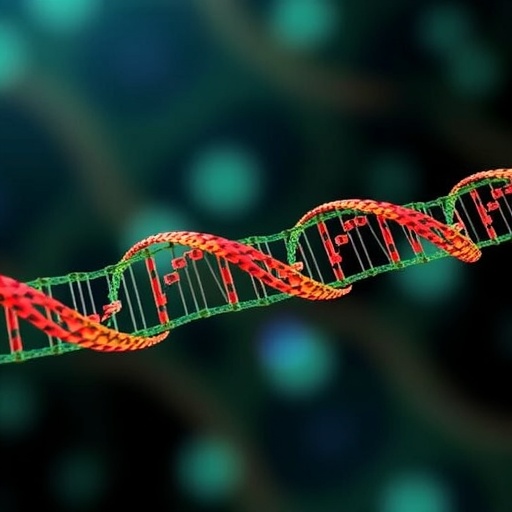Credit: IBS
A research team led by CHEON Jinwoo at the Center for Nanomedicine, within the Institute for Basic Science (IBS), developed the Nano MRI Lamp: A new technology platform that tunes the magnetic resonance imaging (MRI) signals "ON" only in the presence of the targeted disease. Published in Nature Materials, this study can overcome the limitations of existing MRI contrast agents.
MRI is an increasingly popular non-invasive technique for diagnosis and, importantly, does not use harmful radiation. Some tissues show a natural contrast on MRI, but for some specific types of imaging, patients are administered a MRI contrast agent to enhance the difference between the target area and the rest of the body. "Typical MRI contrast agents, like gadolinium, are injected in an "ON" state and distributed across the whole biological system with relatively large background signal," explains Director Cheon. "We found a new principle to switch the MRI contrast agent "ON" only in the location of the target." IBS scientists discovered how to switch the signal ON/OFF by using the Nano MRI Lamp.
The Nano MRI Lamp technology consists of two magnetic materials: A quencher (magnetic nanoparticle) and an enhancer (MRI contrast agent). The switch is due to the distance between the two. When the two materials are at a critical distance, farther than 7 nanometers (nm), the MRI signal is "ON", whereas when they are placed closer than 7 nm, the MRI signal is "OFF". The researchers named this phenomenon Magnetic REsonance Tuning (MRET), which is analogous to the powerful optical sensing technique called Fluorescence Resonance Energy Transfer (FRET).
The researchers tested the Nano MRI Lamp for cancer diagnosis. They detected the presence of an enzyme that can induce tumor metastasis, MMP-2 (matrix metalloproteinase-2) in mice with cancer. They connected the two magnetic materials with a linker that is naturally cleaved by MMP-2. Since the linker keeps the two materials close to each other, the MRI signal was "OFF". However, in the presence of the cancer, the linker is cleaved by MMP-2, which cause the two materials to be separated and the MRI signal switched "ON". Therefore, the MRI signal indicated the location of MMP-2, and the tumor. The scientists also found that the brightness of the MRI signal correlates with the concentration of MMP-2 in the cancerous tissue.
Most importantly, the Nano MRI Lamp remains switched off until it meets a biomarker associated with a specific disease, allowing higher sensitivity. "The current contrast agent is like using a flashlight during a sunny day: Its effect is limited. Instead, this new technology is like using a flash light at night and therefore more useful," explains Cheon.
Beyond cancer diagnosis, the Nano MRI Lamp can, in principle, be applied to investigate a variety of biological events, such as enzymolysis, pH variation, protein-protein interactions, etc. IBS scientists expect that it would be useful for both in vitro and in vivo diagnostics.
"Although we still have a long way to go, we established the principle and believe that the MRET and Nano MRI Lamp can serve as a novel sensing principle to augment the exploration of a wide range of biological systems," concludes Cheon. The research group is now working on developing safer and smarter multitasking contrast agents, which can simultaneously record and interpret multiple biological targets, and eventually allow a better understanding of biological processes and accurate diagnosis of diseases.
###
Media Contact
Dahee Carol Kim
[email protected]
@IBS_media
http://www.ibs.re.kr/en/
############
Story Source: Materials provided by Scienmag




